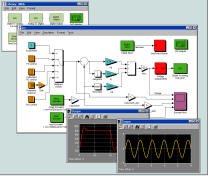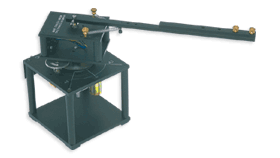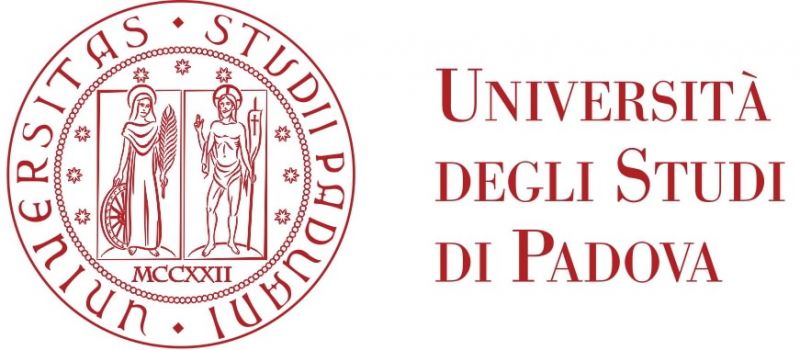

 |
Control Laboratory
a.a. 2016-2017 Laurea Magistrale in Ingegneria dell'Automazione |
 |
| Instructor and collaborators |
Prof. Luca Schenato
Phone: 049 827 7925
Office: 315 DEI/A (3rd floor)
E-mail: ![]() ( NO
luca.schenato@dei.unipd.it !!!!)
( NO
luca.schenato@dei.unipd.it !!!!)
Webpage: http://automatica.dei.unipd.it/people/schenato.html
Office Hours: by email or phone
Eng. Riccardo Antonello
Phone: 049 827 7642
Office: 2nd floor DEI/A
E-mail: riccardo.antonello@dei.unipd.it
Webpage: http://www.webalice.it/riccardo.antonello/website/Home.html
Office Hours: by email or phone
Eng. Marco Todescato
Office: 3rd floor DEI/A
E-mail: marco.todescato@dei.unipd.it
Webpage: http://automatica.dei.unipd.it/people/todescato.html
Office Hours: by email or phone
Eng. Giulia Michieletto
Office: 3rd floor DEI/A
E-mail: giulia.michieletto@dei.unipd.it
Webpage: http://automatica.dei.unipd.it/people/micheletto.html
Office Hours: by email or phone
| Description |
| Lectures |
Each lecture is provided with a link to textbook pages or PDF files.
| WEEK |
MONDAY (10:30-12:15 room Ee) |
WEDNESDAY (10:30-12:15 room Le) |
THURSDAY (12:30-14:15 room Le) |
FRIDAY (12:30-16:15 Control Lab) |
|
1 (30/02-2/03) |
NO LECTURE |
NO LECTURE |
Introduction to the course: benefit of control, control design procedure (Lecture 1) |
|
|
2 (6-9/03) |
Representation of dynamical systems (Lecture 2). Sensor and actuator modeling (Lecture 3) | Dominant pole approximation. Dynamic model reduction (Lecture 4) |
Bode and Nyquist plot. Time domain vs frequency domain performance specifications (Lecture 5) |
|
|
3 (13-16/03) |
MATLAB(laboratorio): Part I Dominant Pole Approximation (Eng. Riccardo Antonello) | Frequency domain design and PID controllers (Lecture 6,Lecture 7) |
Modeling of DC motor with friction (Lecture 8, Lecture 9, Lecture 10) |
|
|
4 (20-23/03) |
SIMULINK (laboratorio): Part II DC Motor (Eng. Riccardo Antonello) | Estimation of Friction Parameters of DC motor |
LAB 0: HW & SW Apparatus 12:30-14:15 | LAB 0: HW & SW Apparatus 14:30-16:15 |
|
5 (27-30/03) |
NO LECTURE |
NO LECTURE |
NO LECTURE |
|
|
6 (2-6/04) |
Antiwindup (Lecture 10), Feedforward Control (Riccardo Antonello) |
Fundamentals of Modern Control Theory: reachability and controllability( Lecture 11, Lecture 12) State feedback control desing: nominal tracking and robust tracking (Lecture 13) |
Internal model principle (Lecture 14,Lecture 15) |
LAB 1: PID & State-space control design |
|
7 (10-13/04) |
Observer design and reduced order observer (Lecture 16) |
LAB 1: PID & State-space control design |
Discrete time systems: representations and design via emulation Exact discretization and control design Practical consideration of digital control (Lecture 17, Lecture 18, Lecture 19) |
|
|
8 (17-20/04) |
NO LECTURE | LAB 2: digital control | Modeling of flexible joint (Ing. Antonello) | LAB 2: digital control |
|
9 (24-27/04) |
NO LECTURE | [nbsp]LQ Control: problem formulation and example (Lecture 20, Lecture 21) | LQ control: Hamiltonian and properties (Lecture 22, Lecture 23) | |
|
10 (1-4/05) |
NO LECTURE | LAB 3: LQ control of flexible joint |
LQ control: Root Locus (Lecture 24, Lecture 25) |
LAB 3: LQ control of flexible joint |
|
11 (8-11/05) |
LQ control: Weight design (Lecture 26, Lecture 27, Lecture 28) |
LQG control: Kalman Filter + LQ control (Extra lecture Notes: Part 1, Part 2, Part 3) |
Segway modeling: mechanical dynamics |
|
|
12 (15-18/05) |
Segway modeling: electric dynamics and sensors |
MATLAB/SIMULINK lab: Part IV Segway (Eng. Riccardo Antonello). Wednesday Shift 8:30-10:15, Friday Shift 10:30-12:15 |
||
|
13 (22-25/05) |
LAB 4: LQ control of a Segway | Industrial guest lecture: SALVAGNINI |
LAB 4: LQ control of a Segway LAB 5: extra lab (9/06 and 10/06) |
| Material |
- Blackboard lectures
- PID design in frequency domain [ notes in PDF]
- LQ control and Frequency Shaping [ notes in PDF]
- Guide for the laboratory software (MATLAB's Realtimeworshop toolbox) and hardware [PDF]
- Notes on DC motor modeling, flexible joint modeling, segway modeling [PDF]
- Notes on how to write a good technical report [PDF]
| Laboratory experiments |
- Parameter identification and PID design for a DC electric motor
- State-space control desing for a DC electric motor
- Digital control desing for a DC electric motor
- LQ control design for a DC electric motor with a flexible joint
| Latex templates |
- Templates for Lecture notes
- Templates for final Techicical report

